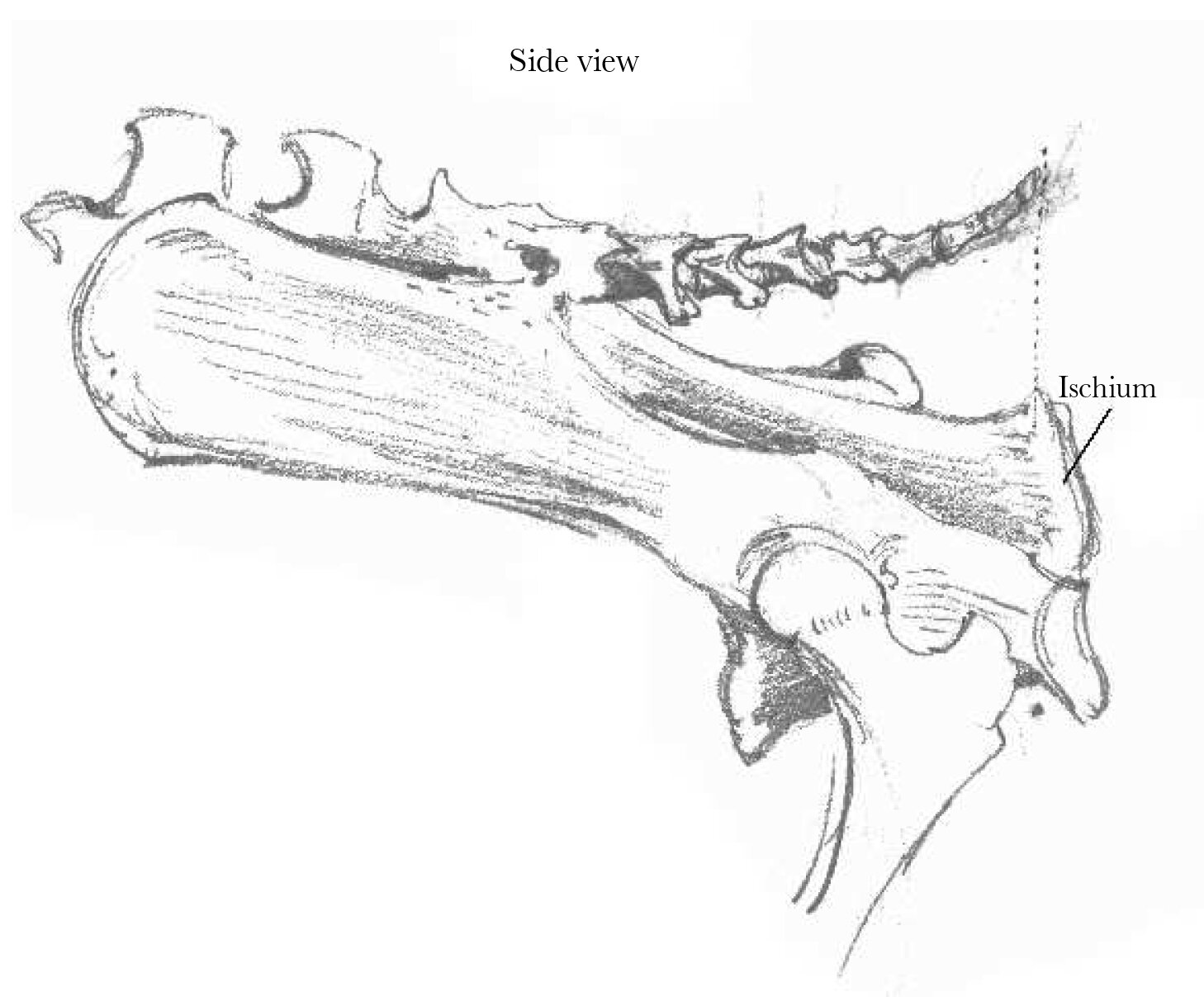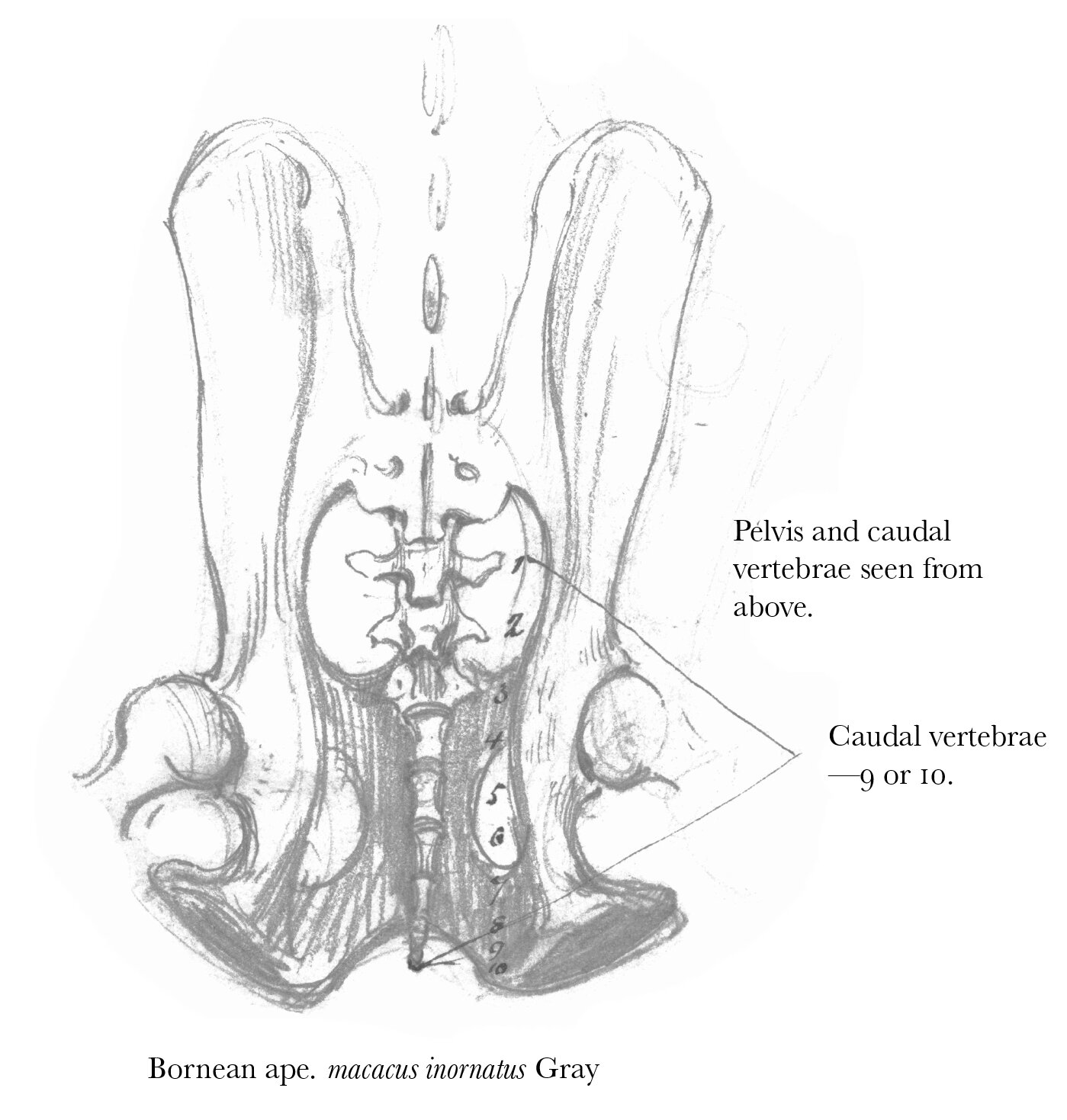From James Murie 1 May 1868
Zoological Society’s Gardens, | Regent’s Park, | London, N.W.
1st. May 1868
Dear Sir
It is only lately that I have had the opportunity of examining the specimen, regarding which you formerly asked me some questions about,—the Bornean Ape macacus inornatus Gray.1
Previously I acquainted you with the external appearances and measurements of which you took notes at the time;2 but in case these are mislaid I here add.
—In the living animal (a young female) there are two callosities, each 1 inch long. The buttocks around around these callosities are flesh coloured or rosy in hue and covered with slight downy hairs.
Tail 1 inch in length, circumference at its root 1 inches,—there is a slight tendency to curvature upwards.
Of the skeleton, the rough sketch of the pelvic parts may serve to convey a better notion of the relation of parts than a long description.
Caudal vert 9 to 10 in number The three first have transverse processes. Together the 3 vertebrae have a length of 0.8 inch long. The remainder of the caudal vertebrae are devoid of transverse processes and the two last are mere ossicles partly coalesced.
These 6 or 7 terminal caudals are together 1 inch long.
The tail vertebrae therefore altogether measure 1.8 inch long—and the terminal point reaches backwards no further than the ischial prominences,—indeed if a vertical line is dropped from the point of the tail it falls upon or is slightly in advance of the superior (Posterior in human anatomy)3 angle of the ischeum while the inferior (or anterior of human anatomy lies behind that vertical line.4
I suppose the (free?) tail when living must have enclosed only those caudal vertebrae without transverse processes.5
I am | Dear Sir | Yours with much esteem | James Murie
C. Darwin Esqr
[Enclosure]


CD annotations
Please cite as “DCP-LETT-6155,” in Ɛpsilon: The Charles Darwin Collection accessed on